Zoubin Ghahramani
Dima
Gemma 3 Technical Report
Mar 25, 2025Abstract:We introduce Gemma 3, a multimodal addition to the Gemma family of lightweight open models, ranging in scale from 1 to 27 billion parameters. This version introduces vision understanding abilities, a wider coverage of languages and longer context - at least 128K tokens. We also change the architecture of the model to reduce the KV-cache memory that tends to explode with long context. This is achieved by increasing the ratio of local to global attention layers, and keeping the span on local attention short. The Gemma 3 models are trained with distillation and achieve superior performance to Gemma 2 for both pre-trained and instruction finetuned versions. In particular, our novel post-training recipe significantly improves the math, chat, instruction-following and multilingual abilities, making Gemma3-4B-IT competitive with Gemma2-27B-IT and Gemma3-27B-IT comparable to Gemini-1.5-Pro across benchmarks. We release all our models to the community.
Gemma 2: Improving Open Language Models at a Practical Size
Aug 02, 2024



Abstract:In this work, we introduce Gemma 2, a new addition to the Gemma family of lightweight, state-of-the-art open models, ranging in scale from 2 billion to 27 billion parameters. In this new version, we apply several known technical modifications to the Transformer architecture, such as interleaving local-global attentions (Beltagy et al., 2020a) and group-query attention (Ainslie et al., 2023). We also train the 2B and 9B models with knowledge distillation (Hinton et al., 2015) instead of next token prediction. The resulting models deliver the best performance for their size, and even offer competitive alternatives to models that are 2-3 times bigger. We release all our models to the community.
RecurrentGemma: Moving Past Transformers for Efficient Open Language Models
Apr 11, 2024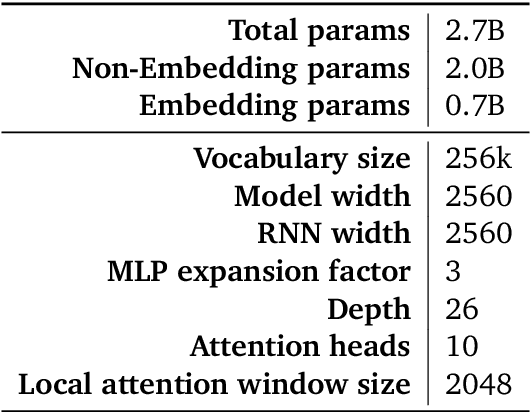
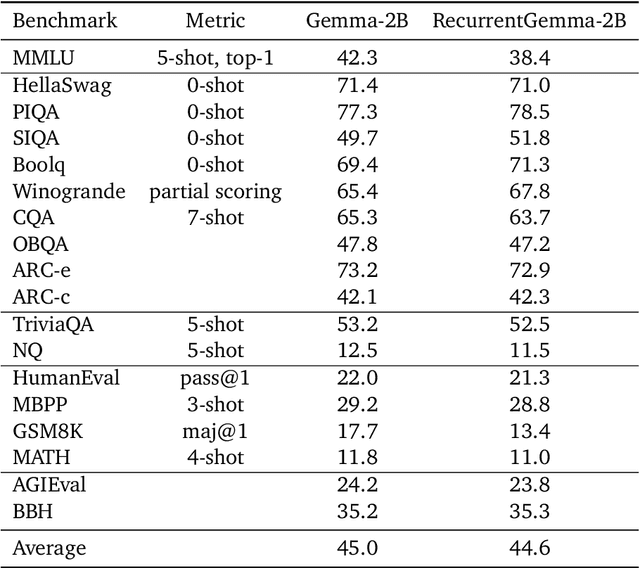
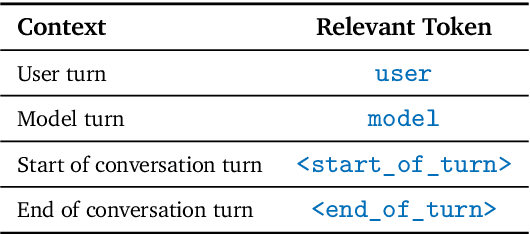
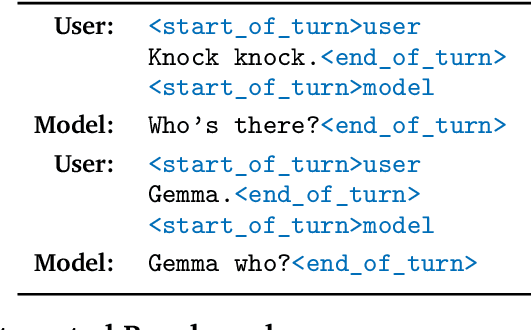
Abstract:We introduce RecurrentGemma, an open language model which uses Google's novel Griffin architecture. Griffin combines linear recurrences with local attention to achieve excellent performance on language. It has a fixed-sized state, which reduces memory use and enables efficient inference on long sequences. We provide a pre-trained model with 2B non-embedding parameters, and an instruction tuned variant. Both models achieve comparable performance to Gemma-2B despite being trained on fewer tokens.
Gemma: Open Models Based on Gemini Research and Technology
Mar 13, 2024



Abstract:This work introduces Gemma, a family of lightweight, state-of-the art open models built from the research and technology used to create Gemini models. Gemma models demonstrate strong performance across academic benchmarks for language understanding, reasoning, and safety. We release two sizes of models (2 billion and 7 billion parameters), and provide both pretrained and fine-tuned checkpoints. Gemma outperforms similarly sized open models on 11 out of 18 text-based tasks, and we present comprehensive evaluations of safety and responsibility aspects of the models, alongside a detailed description of model development. We believe the responsible release of LLMs is critical for improving the safety of frontier models, and for enabling the next wave of LLM innovations.
Plex: Towards Reliability using Pretrained Large Model Extensions
Jul 15, 2022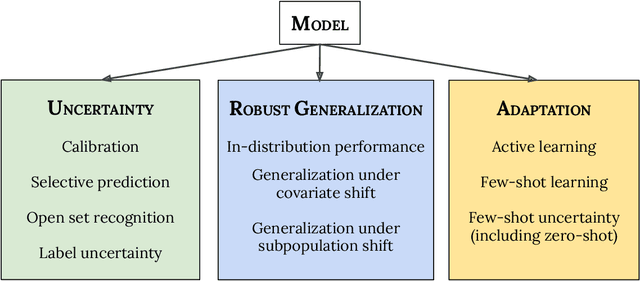

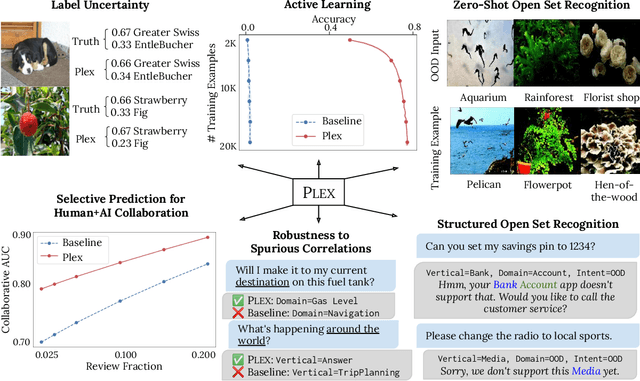

Abstract:A recent trend in artificial intelligence is the use of pretrained models for language and vision tasks, which have achieved extraordinary performance but also puzzling failures. Probing these models' abilities in diverse ways is therefore critical to the field. In this paper, we explore the reliability of models, where we define a reliable model as one that not only achieves strong predictive performance but also performs well consistently over many decision-making tasks involving uncertainty (e.g., selective prediction, open set recognition), robust generalization (e.g., accuracy and proper scoring rules such as log-likelihood on in- and out-of-distribution datasets), and adaptation (e.g., active learning, few-shot uncertainty). We devise 10 types of tasks over 40 datasets in order to evaluate different aspects of reliability on both vision and language domains. To improve reliability, we developed ViT-Plex and T5-Plex, pretrained large model extensions for vision and language modalities, respectively. Plex greatly improves the state-of-the-art across reliability tasks, and simplifies the traditional protocol as it improves the out-of-the-box performance and does not require designing scores or tuning the model for each task. We demonstrate scaling effects over model sizes up to 1B parameters and pretraining dataset sizes up to 4B examples. We also demonstrate Plex's capabilities on challenging tasks including zero-shot open set recognition, active learning, and uncertainty in conversational language understanding.
Pre-training helps Bayesian optimization too
Jul 07, 2022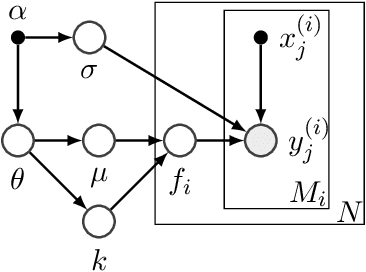



Abstract:Bayesian optimization (BO) has become a popular strategy for global optimization of many expensive real-world functions. Contrary to a common belief that BO is suited to optimizing black-box functions, it actually requires domain knowledge on characteristics of those functions to deploy BO successfully. Such domain knowledge often manifests in Gaussian process priors that specify initial beliefs on functions. However, even with expert knowledge, it is not an easy task to select a prior. This is especially true for hyperparameter tuning problems on complex machine learning models, where landscapes of tuning objectives are often difficult to comprehend. We seek an alternative practice for setting these functional priors. In particular, we consider the scenario where we have data from similar functions that allow us to pre-train a tighter distribution a priori. To verify our approach in realistic model training setups, we collected a large multi-task hyperparameter tuning dataset by training tens of thousands of configurations of near-state-of-the-art models on popular image and text datasets, as well as a protein sequence dataset. Our results show that on average, our method is able to locate good hyperparameters at least 3 times more efficiently than the best competing methods.
Neural Diffusion Processes
Jun 08, 2022



Abstract:Gaussian processes provide an elegant framework for specifying prior and posterior distributions over functions. They are, however, also computationally expensive, and limited by the expressivity of their covariance function. We propose Neural Diffusion Processes (NDPs), a novel approach based upon diffusion models, that learn to sample from distributions over functions. Using a novel attention block, we can incorporate properties of stochastic processes, such as exchangeability, directly into the NDP's architecture. We empirically show that NDPs are able to capture functional distributions that are close to the true Bayesian posterior of a Gaussian process. This enables a variety of downstream tasks, including hyperparameter marginalisation and Bayesian optimisation.
Automatic prior selection for meta Bayesian optimization with a case study on tuning deep neural network optimizers
Sep 16, 2021



Abstract:The performance of deep neural networks can be highly sensitive to the choice of a variety of meta-parameters, such as optimizer parameters and model hyperparameters. Tuning these well, however, often requires extensive and costly experimentation. Bayesian optimization (BO) is a principled approach to solve such expensive hyperparameter tuning problems efficiently. Key to the performance of BO is specifying and refining a distribution over functions, which is used to reason about the optima of the underlying function being optimized. In this work, we consider the scenario where we have data from similar functions that allows us to specify a tighter distribution a priori. Specifically, we focus on the common but potentially costly task of tuning optimizer parameters for training neural networks. Building on the meta BO method from Wang et al. (2018), we develop practical improvements that (a) boost its performance by leveraging tuning results on multiple tasks without requiring observations for the same meta-parameter points across all tasks, and (b) retain its regret bound for a special case of our method. As a result, we provide a coherent BO solution for iterative optimization of continuous optimizer parameters. To verify our approach in realistic model training setups, we collected a large multi-task hyperparameter tuning dataset by training tens of thousands of configurations of near-state-of-the-art models on popular image and text datasets, as well as a protein sequence dataset. Our results show that on average, our method is able to locate good hyperparameters at least 3 times more efficiently than the best competing methods.
Deep Neural Networks as Point Estimates for Deep Gaussian Processes
May 10, 2021



Abstract:Deep Gaussian processes (DGPs) have struggled for relevance in applications due to the challenges and cost associated with Bayesian inference. In this paper we propose a sparse variational approximation for DGPs for which the approximate posterior mean has the same mathematical structure as a Deep Neural Network (DNN). We make the forward pass through a DGP equivalent to a ReLU DNN by finding an interdomain transformation that represents the GP posterior mean as a sum of ReLU basis functions. This unification enables the initialisation and training of the DGP as a neural network, leveraging the well established practice in the deep learning community, and so greatly aiding the inference task. The experiments demonstrate improved accuracy and faster training compared to current DGP methods, while retaining favourable predictive uncertainties.
Learning Continuous Treatment Policy and Bipartite Embeddings for Matching with Heterogeneous Causal Effects
Apr 21, 2020



Abstract:Causal inference methods are widely applied in the fields of medicine, policy, and economics. Central to these applications is the estimation of treatment effects to make decisions. Current methods make binary yes-or-no decisions based on the treatment effect of a single outcome dimension. These methods are unable to capture continuous space treatment policies with a measure of intensity. They also lack the capacity to consider the complexity of treatment such as matching candidate treatments with the subject. We propose to formulate the effectiveness of treatment as a parametrizable model, expanding to a multitude of treatment intensities and complexities through the continuous policy treatment function, and the likelihood of matching. Our proposal to decompose treatment effect functions into effectiveness factors presents a framework to model a rich space of actions using causal inference. We utilize deep learning to optimize the desired holistic metric space instead of predicting single-dimensional treatment counterfactual. This approach employs a population-wide effectiveness measure and significantly improves the overall effectiveness of the model. The performance of our algorithms is. demonstrated with experiments. When using generic continuous space treatments and matching architecture, we observe a 41% improvement upon prior art with cost-effectiveness and 68% improvement upon a similar method in the average treatment effect. The algorithms capture subtle variations in treatment space, structures the efficient optimizations techniques, and opens up the arena for many applications.
 Add to Chrome
Add to Chrome Add to Firefox
Add to Firefox Add to Edge
Add to Edge